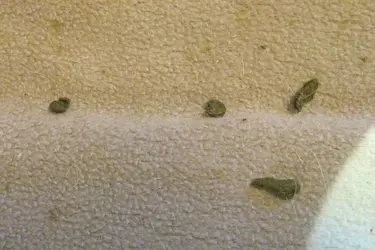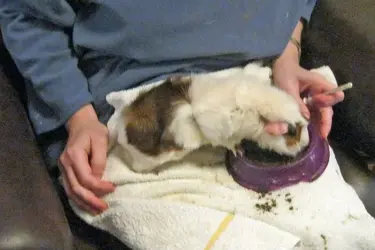1 Available Gut Medication
2 Mild and Medium Bloating Symptoms
- Milder bloat
- Secondary bloating
- Thickened bowel (IBS-like symptoms)
- Build-up of fluid in the body cavity
3 Severe Bloating
- Severe Bloat (Dysbiosis)
- Blockage
- Twisted or trapped gut (volvulus and hernia)
4 GI Stasis (No Gut Movement)
- Sudden full GI stasis
- Partial GI stasis
- Heat stroke
5 Minimising the Risks
Wiebke's Guides are a series of articles I have written for Guinea Pig Magazine in 2023 and 2024.
They are there to help you understand how the body works, learn to spot what is normal and what not and what are the most common health issues connected with each particular organ or body part.
Guinea pigs are basically a gut wrapped in pretty fur and with a big wheek attached. The digestive system is by far the largest organ. In order to break down the tough but highly nutritious grass/hay fibre which is their mainstay, they need a lot of gut and two runs through it. The digestive tract starts in the mouth at one end and ends in the anus at the other end.
What makes digestive problems in cavies so difficult to treat is that the gut is actually very thin and a lot longer – think spaghetti compared to penne pasta in carnivores or humans. Operations on the gut are difficult and therefore avoided. A vet described it to me once: “It is like trying to stitch thin paper to butter.”
1 Available Gut Medication
The other problem is that the available safe medication is very limited. Steroids, which are the best drug for humans and other species with gut problems, are unfortunately a big no for guinea pigs and other rodents.
Ranitidine (the active ingredient in the old zantac in the UK) had to be taken off the market some years ago. It is now making a comeback but worldwide human demand outstrips production by far and getting hold of even a little is difficult for vets.
This leaves them with a very limited range for any problem in the digestive system:
2 Mild and Medium Bloating Symptoms
- Milder bloat
- Secondary bloating
- Thickened bowel (IBS-like symptoms)
- Build-up of fluid in the body cavity
3 Severe Bloating
- Severe Bloat (Dysbiosis)
- Blockage
- Twisted or trapped gut (volvulus and hernia)
4 GI Stasis (No Gut Movement)
- Sudden full GI stasis
- Partial GI stasis
- Heat stroke
5 Minimising the Risks
Wiebke's Guides are a series of articles I have written for Guinea Pig Magazine in 2023 and 2024.
They are there to help you understand how the body works, learn to spot what is normal and what not and what are the most common health issues connected with each particular organ or body part.
Guinea pigs are basically a gut wrapped in pretty fur and with a big wheek attached. The digestive system is by far the largest organ. In order to break down the tough but highly nutritious grass/hay fibre which is their mainstay, they need a lot of gut and two runs through it. The digestive tract starts in the mouth at one end and ends in the anus at the other end.
What makes digestive problems in cavies so difficult to treat is that the gut is actually very thin and a lot longer – think spaghetti compared to penne pasta in carnivores or humans. Operations on the gut are difficult and therefore avoided. A vet described it to me once: “It is like trying to stitch thin paper to butter.”
1 Available Gut Medication
The other problem is that the available safe medication is very limited. Steroids, which are the best drug for humans and other species with gut problems, are unfortunately a big no for guinea pigs and other rodents.
Ranitidine (the active ingredient in the old zantac in the UK) had to be taken off the market some years ago. It is now making a comeback but worldwide human demand outstrips production by far and getting hold of even a little is difficult for vets.
This leaves them with a very limited range for any problem in the digestive system:
- metoclopramide or emeprid (gut stimulant with the same active ingredient)
- cisapride (anti-bloating replacement for zantac) or simethicone (which tends to collect gas in one larger bubble rather than dispersing it – not ideal for spaghetti guts)
- analgesics like meloxicam (metacam) for any pain and inflammation
- probiotics and live microbiome transfer to support the gut microbiome


